Latest Posts by carlosalberthreis - Page 4
We Just Identified More Than 200 New (Potential) Planets
The Kepler space telescope is our first mission capable of identifying Earth-size planets around other stars. On Monday, June 19, 2017, scientists from many countries gathered at our Ames Research Center to talk about the latest results from the spacecraft, which include the identification of more than 200 potential new worlds! Here’s what you need to know:
We found 219 new planet candidates.

All of these worlds were found in a patch of sky near the Cygnus constellation in our Milky Way galaxy. Between 2009 and 2013, Kepler searched more than 200,000 stars in the region for orbiting planets. The 219 new planet candidates are part of the more than 4,000 planet candidates and 2,300 confirmed planets Kepler has identified to date.
Ten of these worlds are like our own.

Out of the 219 new planet candidates, 10 are possibly rocky, terrestrial worlds and orbit their star in the habitable zone – the range of distances from a star where liquid water could pool on the surface of a rocky planet.
Small planets come in two sizes.

Kepler has opened up our eyes to the existence of many small worlds. It turns out a lot of these planets are either approximately 1.5 times the size of Earth or just smaller than Neptune. The cool names given to planets of these sizes? Super Earths and mini-Neptunes.
Some of the new planets could be habitable.

Water is a key ingredient to life as we know it. Many of the new planet candidates are likely to have small rocky cores enveloped by a thick atmosphere of hydrogen and helium, and some are thought to be ocean worlds. That doesn’t necessarily mean the oceans of these planets are full of water, but we can dream, can’t we?
Other Earths are out there.

Kepler’s survey has made it possible for us to measure the number of Earth-size habitable zone planets in our galaxy. Determining how many planets like our own that exist is the big question we’ll explore next.
The hunt for new planets continues.

Kepler continues to search for planets in different regions of space. With the launch of our Transiting Exoplanet Survey Satellite (TESS) and the James Webb Space Telescope (JWST) in 2018, we’re going to search for planets nearest the sun and measure the composition of their atmospheres. In the mid-2020s, we have our sights on taking a picture of small planets like Earth with our Wide-Field Infrared Survey Telescope (WFIRST).
*All images of planets are artist illustrations.
Make sure to follow us on Tumblr for your regular dose of space: http://nasa.tumblr.com
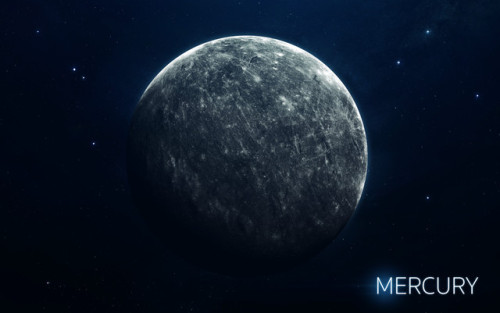
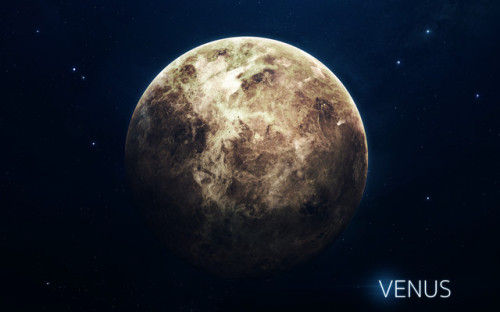
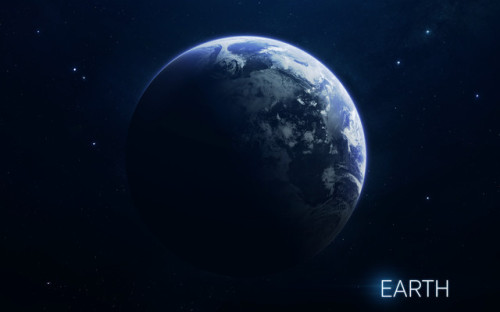
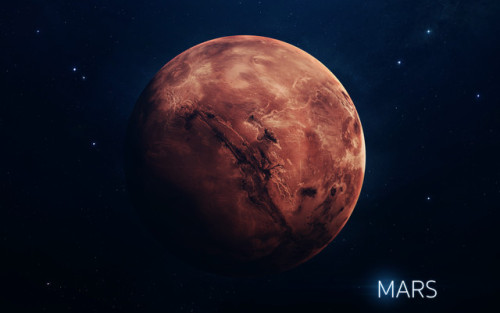
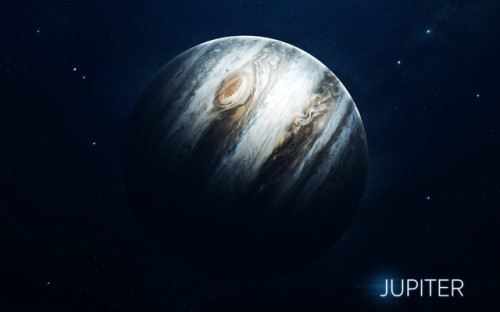
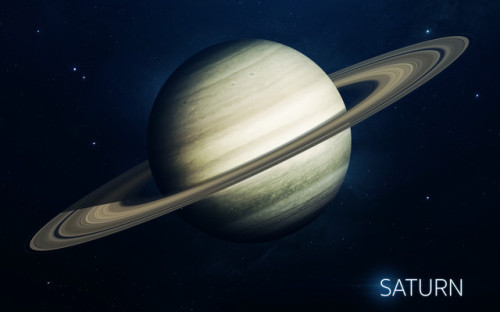
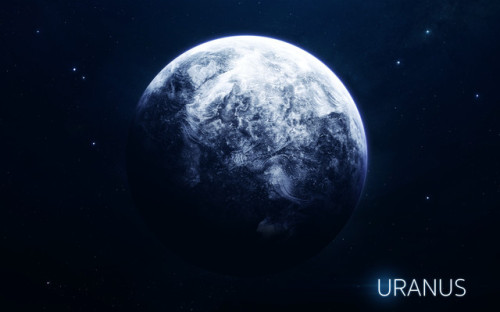
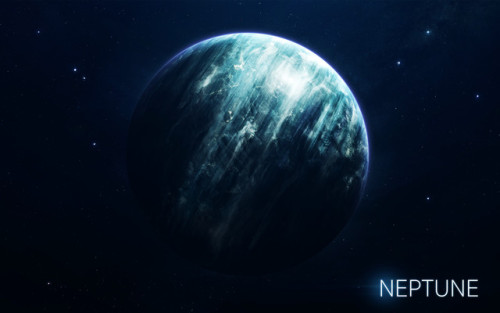

Berries - Vadim Sadovski
What’s Up for June 2017?
Have a planet party and compare Saturn and Jupiter! We’ll show you where and when to point your telescope or binoculars to see these planets and their largest moons.

Meet at midnight to have a planetary party when Jupiter and Saturn are visible at the same time!

The best time will be after midnight on June 17. To see the best details, you’ll need a telescope.

Saturn will be at opposition on June 14, when Saturn, the Earth and the sun are in a straight line.

Opposition provides the best views of Saturn and several of its brightest moons. At the very least, you should be able to see Saturn’s moon Titan, which is larger and brighter than Earth’s moon.

As mentioned earlier, you’ll be able to see Jupiter and Saturn in the night sky this month. Through a telescope, you’ll be able to see the cloud bands on both planets. Saturn’s cloud bands are fainter than those on Jupiter.

You’ll also have a great view of Saturn’s Cassini Division, discovered by astronomer Giovanni Cassini in 1675, namesake of our Cassini spacecraft.

Our Cassini spacecraft has been orbiting the planet since 2004 and is on a trajectory that will ultimately plunge it into Saturn’s atmosphere on September 15, 2017, bringing the mission to a close.

Our Juno spacecraft recently completed its sixth Jupiter flyby. Using only binoculars you can observe Jupiter’s 4 Galilean moons - Io, Callisto, Ganymede and Europa.

To learn about What’s Up in the skies for June 2017, watch the full video:
For more astronomy events, check out NASA’s Night Sky Network at https://nightsky.jpl.nasa.gov/.
Make sure to follow us on Tumblr for your regular dose of space: http://nasa.tumblr.com
6 Ways NASA Space Communications Connect Astronauts to Earth
1. When Astronauts Phone Home, the Space Network Answers

Operated by our Goddard Space Flight Center in Greenbelt, Maryland, this communications system enables all types of Earth-to-astronaut communication. The Space Network is a complex system of ground station terminals and satellites. The satellites, called ‘Tracking and Data Relay Satellites’ or TDRS, provide continuous communications for human spaceflight 24/7/365. The information this network relays includes astronaut communication with Mission Control in Houston, posting live video of spacewalks and live interviews with schools, even posting Tweets on Twitter and doing Facebook posts. The Space Network can even broadcast live 4K, ultra-HD video right from the station. You can now watch an astronaut eat a space taco in high definition. WHAT A TIME TO BE ALIVE!
2. The Space Network Also Communicates Science Data

Astronauts on the Space Station perform experiments on the station that will enable our Journey to Mars and other future human space missions. For example, astronaut Peggy Whitson works on a bone cell study that could lead to better preventative care or therapeutic treatments for people suffering bone loss as a result of bone diseases like osteopenia and osteoporosis, or for patients on prolonged bed rest. All that fantastic data is sent back to Earth via our Space Network for scientists around the world to analyze and build on.
3. The Space Network Transmits Spacecraft Health Data

The Space Network not only lets us communicate with the astronauts, it also tracks the ‘health’ of the spacecraft, be it the International Space Station where the astronauts are living, a cargo vehicle servicing the space station, or even, in the near future, crewed vehicles to other worlds. We deliver data on a spacecraft’s state of health, from power generation levels and avionics status to carbon dioxide and oxygen levels, and more to Mission Control 24/7/365.
4. The Space Network Helps Monitor Spacecraft Location

The International Space Station Is pretty big, but space is bigger. The Space Network enables flight controllers on the ground to provide a GPS-type service for the Space Station, letting them track the exact location of the space station at all times as it orbits the Earth. It also allows us Earth-bound folk to get real-time text updates when the Space Station is flying overhead. If you want to track the station, sign up here: https://spotthestation.nasa.gov
5. The Space Network Supports Launch Vehicles

Goddard’s Space Network also controls all the communications for all the missions that go to the space station. That includes command and telemetry services during launches, free flight, berthing and un-berthing to the station, as well as re-entry and landing back to Earth.
6. The Space Network Is Also Looking Toward the Future

It’s also helping to test vehicles that will carry astronauts to other worlds. Currently, they are working with teams for our Space Launch System and commercial crew vehicles. The first flights for these vehicles will occur in 2018 and 2019, setting us on the road to Journey to Mars! This image shows the Orion capsule that will aid in our continuous march into space.
What’s Next for the Space Network?
We’re continuing to grow! Watch out for the launch of a new TDRS spacecraft in August 2017! TDRS-M is coming. Check out more info here and join our countdown to TDRS launch: https://tdrs.gsfc.nasa.gov.









Berries - Vadim Sadovski
Como As Estrelas Morrem Quando Caem Num Buraco Negro? - Space Today TV Ep.731
Desde quando se lê o primeiro texto sobre buracos negros, se aprende que esses objetos possuem uma força gravitacional imensa, e que nem a luz consegue escapar dele, e se um objeto passar pelo horizonte de eventos, não tem mais volta, ele irá cair e desaparecer.
Mas será que existe mesmo um horizonte de eventos? O que nós lemos e aprendemos foi proposto pela Teoria Geral da Relatividade de Albert Einstein.
Será que ao invés de um buraco negro o que tem ali não é um objeto estranho supermassivo.
Diferente do caso do buraco negro onde existe uma singularidade, essa ideia modificada, diz que esse objeto teria uma superfície rígida, nesse caso um objeto, como uma estrela, ao passar próximo se chocaria com a superfície ao invés de ser engolida.
Um grupo de pesquisadores resolveu então testar qual das duas hipóteses é a mais correta para um buraco negro, e esse teste também funcionou como um grande teste, mais uma vez para a Teoria da Relatividade, pois provaria que existe um horizonte de eventos e que nenhum objeto realmente sobrevive a um buraco negro.
Os astrônomos pensaram o que um telescópio poderia ver caso um objeto sobrevivesse a um buraco negro.
Para fazer a busca eles escolheram buracos negros supermassivos no chamado universo próximo.
Então eles buscaram nos dados de arquivos do telescópio Pan-STARRS, um telescópio de 1.8 metros de diâmetro que pesquisa metade do céu do hemisfério norte, e ele escaneou a mesma área repetidamente num período de 3.5 anos buscando pelos chamados transientes.
Basicamente, coisas que brilham e depois apagam, e os pesquisadores buscavam por assinaturas da luz de uma estrela caindo num buraco negro ou se chocando com uma superfície.
Os astrônomos modelaram tudo isso e sabiam a taxa de estrelas que eles deveriam detectar nesse período de 3.5 anos.
E depois de vasculhar os dados do telescópio eles não descobriram absolutamente nada.
A conclusão, os buracos negros realmente possuem um horizonte de eventos e que o material realmente desaparece, como era realmente esperado.
Os astrônomos querem agora no futuro próximo utilizar o Large Synoptic Survey Telescope que como o Pan-STARRS irá pesquisar o céu repetidas vezes buscando por transientes, mas agora com um diâmetro de 8.4 metros.
Incoming! We’ve Got Science from Jupiter!
Our Juno spacecraft has just released some exciting new science from its first close flyby of Jupiter!

In case you don’t know, the Juno spacecraft entered orbit around the gas giant on July 4, 2016…about a year ago. Since then, it has been collecting data and images from this unique vantage point.

Juno is in a polar orbit around Jupiter, which means that the majority of each orbit is spent well away from the gas giant. But once every 53 days its trajectory approaches Jupiter from above its north pole, where it begins a close two-hour transit flying north to south with its eight science instruments collecting data and its JunoCam camera snapping pictures.

Space Fact: The download of six megabytes of data collected during the two-hour transit can take one-and-a-half days!

Juno and her cloud-piercing science instruments are helping us get a better understanding of the processes happening on Jupiter. These new results portray the planet as a complex, gigantic, turbulent world that we still need to study and unravel its mysteries.
So what did this first science flyby tell us? Let’s break it down…
1. Tumultuous Cyclones

Juno’s imager, JunoCam, has showed us that both of Jupiter’s poles are covered in tumultuous cyclones and anticyclone storms, densely clustered and rubbing together. Some of these storms as large as Earth!

These storms are still puzzling. We’re still not exactly sure how they formed or how they interact with each other. Future close flybys will help us better understand these mysterious cyclones.

Seen above, waves of clouds (at 37.8 degrees latitude) dominate this three-dimensional Jovian cloudscape. JunoCam obtained this enhanced-color picture on May 19, 2017, at 5:50 UTC from an altitude of 5,500 miles (8,900 kilometers). Details as small as 4 miles (6 kilometers) across can be identified in this image.

An even closer view of the same image shows small bright high clouds that are about 16 miles (25 kilometers) across and in some areas appear to form “squall lines” (a narrow band of high winds and storms associated with a cold front). On Jupiter, clouds this high are almost certainly comprised of water and/or ammonia ice.
2. Jupiter’s Atmosphere
Juno’s Microwave Radiometer is an instrument that samples the thermal microwave radiation from Jupiter’s atmosphere from the tops of the ammonia clouds to deep within its atmosphere.

Data from this instrument suggest that the ammonia is quite variable and continues to increase as far down as we can see with MWR, which is a few hundred kilometers. In the cut-out image below, orange signifies high ammonia abundance and blue signifies low ammonia abundance. Jupiter appears to have a band around its equator high in ammonia abundance, with a column shown in orange.

Why does this ammonia matter? Well, ammonia is a good tracer of other relatively rare gases and fluids in the atmosphere…like water. Understanding the relative abundances of these materials helps us have a better idea of how and when Jupiter formed in the early solar system.
This instrument has also given us more information about Jupiter’s iconic belts and zones. Data suggest that the belt near Jupiter’s equator penetrates all the way down, while the belts and zones at other latitudes seem to evolve to other structures.
3. Stronger-Than-Expected Magnetic Field

Prior to Juno, it was known that Jupiter had the most intense magnetic field in the solar system…but measurements from Juno’s magnetometer investigation (MAG) indicate that the gas giant’s magnetic field is even stronger than models expected, and more irregular in shape.

At 7.766 Gauss, it is about 10 times stronger than the strongest magnetic field found on Earth! What is Gauss? Magnetic field strengths are measured in units called Gauss or Teslas. A magnetic field with a strength of 10,000 Gauss also has a strength of 1 Tesla.

Juno is giving us a unique view of the magnetic field close to Jupiter that we’ve never had before. For example, data from the spacecraft (displayed in the graphic above) suggests that the planet’s magnetic field is “lumpy”, meaning its stronger in some places and weaker in others. This uneven distribution suggests that the field might be generated by dynamo action (where the motion of electrically conducting fluid creates a self-sustaining magnetic field) closer to the surface, above the layer of metallic hydrogen. Juno’s orbital track is illustrated with the black curve.
4. Sounds of Jupiter
Juno also observed plasma wave signals from Jupiter’s ionosphere. This movie shows results from Juno’s radio wave detector that were recorded while it passed close to Jupiter. Waves in the plasma (the charged gas) in the upper atmosphere of Jupiter have different frequencies that depend on the types of ions present, and their densities.
Mapping out these ions in the jovian system helps us understand how the upper atmosphere works including the aurora. Beyond the visual representation of the data, the data have been made into sounds where the frequencies and playback speed have been shifted to be audible to human ears.
5. Jovian “Southern Lights”

The complexity and richness of Jupiter’s “southern lights” (also known as auroras) are on display in this animation of false-color maps from our Juno spacecraft. Auroras result when energetic electrons from the magnetosphere crash into the molecular hydrogen in the Jovian upper atmosphere. The data for this animation were obtained by Juno’s Ultraviolet Spectrograph.

During Juno’s next flyby on July 11, the spacecraft will fly directly over one of the most iconic features in the entire solar system – one that every school kid knows – Jupiter’s Great Red Spot! If anybody is going to get to the bottom of what is going on below those mammoth swirling crimson cloud tops, it’s Juno.

Stay updated on all things Juno and Jupiter by following along on social media: Twitter | Facebook | YouTube | Tumblr
Learn more about the Juno spacecraft and its mission at Jupiter HERE.
Solar System: Things to Know This Week
Jupiter, our solar system’s largest planet, is making a good showing in night skies this month. Look for it in the southeast in each evening. With binoculars, you may be able to see the planet’s four largest moons. Here are some need-to-know facts about the King of the Planets.

1. The Biggest Planet:
With a radius of 43,440.7 miles (69,911 kilometers), Jupiter is 11 times wider than Earth. If Earth were the size of a nickel, Jupiter would be about as big as a basketball.

2. Fifth in Line
Jupiter orbits our sun, and is the fifth planet from the sun at a distance of about 484 million miles (778 million km) or 5.2 Astronomical Units (AU). Earth is one AU from the sun.

3. Short Day / Long Year
One day on Jupiter takes about 10 hours (the time it takes for Jupiter to rotate or spin once). Jupiter makes a complete orbit around the sun (a year in Jovian time) in about 12 Earth years (4,333 Earth days).

4. What’s Inside?
Jupiter is a gas-giant planet without a solid surface. However, the planet may have a solid, inner core about the size of Earth.

5. Atmosphere
Jupiter’s atmosphere is made up mostly of hydrogen (H2) and helium (He).

6. Many Moons
Jupiter has 53 known moons, with an additional 14 moons awaiting confirmation of their discovery — a total of 67 moons.

7. Ringed World
All four giant planets in our solar system have ring systems and Jupiter is no exception. Its faint ring system was discovered in 1979 by the Voyager 1 mission.

8. Exploring Jupiter:
Many missions have visited Jupiter and its system of moons. The Juno spacecraft is currently orbiting Jupiter.

9. Ingredients for Life?
Jupiter cannot support life as we know it. However, some of Jupiter’s moons have oceans underneath their crusts that might support life.

10. Did You Know?
Jupiter’s Great Red Spot is a gigantic storm (about the size of Earth) that has been raging for hundreds of years.
Discover more lists of 10 things to know about our solar system HERE.
Make sure to follow us on Tumblr for your regular dose of space: http://nasa.tumblr.com
Celestial Geometry: Equinoxes and Eclipses
March 20 marks the spring equinox. It’s the first day of astronomical spring in the Northern Hemisphere, and one of two days a year when day and night are just about equal lengths across the globe.

Because Earth is tilted on its axis, there are only two days a year when the sun shines down exactly over the equator, and the day/night line – called the terminator – runs straight from north to south.
In the Northern Hemisphere, the March equinox marks the beginning of spring – meaning that our half of Earth is slowly tilting towards the sun, giving us longer days and more sunlight, and moving us out of winter and into spring and summer.

An equinox is the product of celestial geometry, and there’s another big celestial event coming up later this year: a total solar eclipse.

A solar eclipse happens when the moon blocks our view of the sun. This can only happen at a new moon, the period about once each month when the moon’s orbit positions it between the sun and Earth — but solar eclipses don’t happen every month.
The moon’s orbit around Earth is inclined, so, from Earth’s view, on most months we see the moon passing above or below the sun. A solar eclipse happens only on those new moons where the alignment of all three bodies are in a perfectly straight line.

On Aug. 21, 2017, a total solar eclipse will be visible in the US along a narrow, 70-mile-wide path that runs from Oregon to South Carolina. Throughout the rest of North America – and even in parts of South America, Africa, Europe and Asia – the moon will partially obscure the sun.

Within the path of totality, the moon will completely cover the sun’s overwhelmingly bright face, revealing the relatively faint outer atmosphere, called the corona, for seconds or minutes, depending on location.
It’s essential to observe eye safety during an eclipse. Though it’s safe to look at the eclipse ONLY during the brief seconds of totality, you must use a proper solar filter or indirect viewing method when any part of the sun’s surface is exposed – whether during the partial phases of an eclipse, or just on a regular day.

Learn more about the August eclipse at eclipse2017.nasa.gov.
Make sure to follow us on Tumblr for your regular dose of space: http://nasa.tumblr.com
#Eclipse2017
Solar System: Things to Know the August Eclipse
We’re counting down until the August 21 total solar eclipse that will be visible across most of North America. Here are some things you can do to prepare.

1. Find A Spot
The eclipse should be visible to some extent across the continental U.S. Here’s map of its path.
Our eclipse page can help you find the best viewing locations by longitude and latitude: eclipse.gsfc.nasa.gov/SEgoogle/SEgoogle2001/SE2017Aug21Tgoogle.html
2. Citizen Science
Want to know more about citizen science projects? Find a list of citizen science projects for the eclipse: https://eclipse.aas.org/resources/citizen-science

3. Never look directly at the sun! Even during the early phases of the eclipse!
Get your eclipse viewing safety glasses beforehand: eclipse2017.nasa.gov/safety

4. Get Our Interactive Eclipse Module App
In this interactive, 3D simulation of the total eclipse on August 21, 2017, you can see a view of the eclipse from anywhere on the planet:
http://eyes.jpl.nasa.gov/eyes-on-eclipse.html
5. Got questions?
Join the conversation on social media. Tag your posts: #Eclipse2017.
Twitter: @NASASolarSystem, @NASA, @NASASunEarth Facebook: NASA Solar System
Discover the full list of 10 things to know about our solar system this week HERE.
Follow us on Tumblr for your regular dose of space: http://nasa.tumblr.com
Fotografar um buraco negro, é possível? Óbvio que fotografar o interior de um buraco negro, ou o que acontece além do horizonte de eventos, é algo impossível, pois a partir do horizonte de eventos, nada consegue escapar, nem mesmo a luz.
Agora, fotografar o horizonte de eventos é sim algo possível, porém para realizar esse feito seria necessário um telescópio gigantesco, para se ter uma ideia, para fotografar o horizonte de eventos do buraco negro no centro da Via Láctea, seria necessário um telescópio que tivesse, virtualmente o diâmetro do planeta Terra.
E será que isso é possível? Não só é possível, como está pronto para operar.
A iniciativa se chama Event Horizon Telescope, ou Telescópio do horizonte de Eventos.
O objetivo é integrar os grandes radiotelescópios do mundo, e a através de uma técnica chamada de interferometria e assim conseguir observar o horizonte de eventos do buraco negro supermassivo no centro da Via Láctea.
Para quem não sabe, o buraco negro central da Via Láctea, se chama Sagitarius A*, está localizado a cerca de 26 mil anos-luz de distância da Terra, e obviamente nunca foi observado.
O que se tem são indícios de sua existência devido a observação das estrelas ao redor se movimentando de forma muito rápida, o que sugere um objeto extremamente denso no centro.
O seu horizonte de eventos tem cerca de 20 milhões de km, parece muito, mas na distância que ele está não é nada, é só mesmo, um telescópio do tamanho da Terra é capaz de observar.
O EHT usa uma técnica chamada de VLBI (Very Long baseline array interferometry).
Na verdade a técnica consiste em combinar o poder das maiores antenas de rádio telecópios do mundo todos olhando para um mesmo alvo ao mesmo tempo.
Com a recente adição do ALMA ao EHT sua sensibilidade foi extremamente melhorada.
além dos instrumentos, o local onde ficarão armazenados os dados já está pronto esperando a quantidade enorme de informação. A capacidade de armazenamento é equivalente a de 10000 laptops tradicionais.
Além de tudo isso, obviamente o algoritmo que irá fazer a análise dos dados já está bem desenvolvido.
E para ter uma certeza no sucesso do experimento, simulações já foram rodadas levando em consideração as equações de Einstein.
E o efeito que os astrônomos esperam observar é a sombra do buraco negro na matéria subjacente e quando essa sombra acontecer, o horizonte de eventos se tornará proeminente.
Agora a pergunta que não quer parar? Quando teremos essa imagem?
Os astrônomos pretendem fazer a campanha de observação entre 5 e 14 de Abril de 2017, mas devido à complexidade das análises, provavelmente a primeira imagem só fique pronta em 2018, ah, e só para lembrar não tem nada da NASA nisso.
Além obviamente de fazer a imagem do horizonte de eventos, que será algo extraordinário, esse experimento poderá provar mais uma vez a teoria da relatividade de Albert Einstein. Muitos efeitos só provados teoricamente poderão ser testados nessa observação.
E não existe melhor lugar para testar a teoria da relatividade do que o ambiente extremo nas vizinhanças de um buraco negro.
Será que esse ano conseguiremos esse fato extraordinário? vamos aguardar e estarei aqui anunciando para vocês as novidades.
(via https://www.youtube.com/watch?v=NFRk-1yq86Y)
Sobre o eclipse penumbral do dia 10 de fevereiro de 2017!
Subtle Lunar Eclipse
Today’s (Feb. 10) lunar activity comes in the form of a penumbral eclipse. What does that mean and how does this type differ from a total eclipse? Let’s take a look:

First off, what is a penumbra? During a lunar eclipse, two shadows are cast by the Earth. The first is called the umbra (UM bruh). This shadow gets smaller as it goes away from the Earth. It is the dark center of the eclipse shadow where the moon is completely in the shadow of the Earth.

The second shadow is called the penumbra (pe NUM bruh). The penumbra gets larger as it goes away from the Earth. The penumbra is the weak or pale part of the shadow. This occurs because the Earth is covering a portion of the sun.

Penumbral eclipses occur when only the outer shadow (the penumbra) of Earth falls on the moon’s surface. This type of eclipse is much more difficult to observe than total eclipses or when a portion of the moon passes into the umbra. That said, if you’re very observant, you may notice a dark shadow on the moon during mid-eclipse on Friday evening. You may not notice anything at all. It’s likely the moon will just look at little bit darker than normal…like this:

Earth’s penumbral shadow forms a diverging cone that expands into space in the opposite direction of the sun. From within this zone, Earth blocks part but not the entire disk of the sun. Thus, some fraction of the sun’s direct rays continues to reach the most deeply eclipsed parts of the moon during a penumbral eclipse.
For most of North America, the penumbral eclipse will begin at moonrise (sunset) on Friday, Feb. 10 and will be obscured by evening light. Here’s a guide of when to look up:

Fun fact: Aristotle (384 – 322 BCE) first proved that Earth was round using the curved umbral shadow seen at partial eclipses. In comparing observations of several eclipses, he noted that Earth’s shadow was round no matter where the eclipse took place. Aristotle correctly reasoned that only a sphere casts a round shadow from every angle.
To learn more about lunar eclipses, visit: https://svs.gsfc.nasa.gov/11828
Make sure to follow us on Tumblr for your regular dose of space: http://nasa.tumblr.com
Eu já falei muitas vezes para vocês que os buracos negros podem ser classificados em 3 categorias: os buracos negros supermassivos encontrados no centro de galáxias, os buracos negros de massa estelar e os buracos negros intermediários.
Esses últimos ainda não tiveram sua existência confirmada, mas os astrônomos acreditam que eles devem sim existir.
Esse tipo de buraco negro teria uma massa entre 100 e 10 mil vezes a massa do Sol e a importância além de serem o ele perdido entre os buracos negros estelares e os supermassivos, eles poderiam ser as sementes que dão origem aos buracos negros supermassivos.
Um grupo de astrônomos anunciou na última edição da revista Nature evidências para a existência de um buraco negro de massa intermediária no interior do aglomerado globular 47 Tucanae.
Esse aglomerado tem 12 bilhões de anos de vida e está localizado a cerca de 13 mil anos-luz de distância da Terra, na constelação de Tucano.
Ele contém milhares de estrelas, condensadas numa bola com 120 anos-luz de diâmetro. Além disso ele possui duas dezenas de pulsares que são importantes para essas evidências.
Esse aglomerado já foi examinado na busca por buraco negro, mas o resultado não foi o desejado, porque não no raio-X só é possível identificar os buracos negros supermassivos se alimentando ferozmente. O que não é o caso no interior desse aglomerado.
Mesmo em buracos negros mais calmos como o da nossa galáxia, inferir a sua presença não é algo complicado pois as estrela na sua volta começam a se movimentar a altas velocidades, algo também que não foi identificado no 47 Tucanae.
No caso de um aglomerado globular, uma evidência para a presença de um buraco negro é o movimento geral das estrelas, o buraco negro funciona como uma colher, recolhendo estrelas e atirando-as a altas velocidades e a grande distâncias, isso gera um sinal que é detectado pelos astrônomos.
Outra evidência são os pulsares, que emitem sinais de rádio facilmente detectados, com a presença do buraco negro de massa intermediária os pulsares são detectados a distâncias maiores do centro do que se o buraco negro não existisse.
combinando essas evidências e usando modelos computacionais, os astrônomos concluíram a presença de um buraco negro com massa equivalente a 2200 vezes a massa do Sol no 47 Tucanae.
Essa descoberta é importante, pois a técnica de detecção e a metodologia usada no processamento dos dados podem ser aplicadas a outras aglomerados globulares na busca por mais buracos negros de massa intermediária, e assim vamos também traçando a linha evolutiva desses que são um dos objetos mais intrigantes do universo.
(via https://www.youtube.com/watch?v=0WCJy3bBKfY)
Flying to New Heights With the Magnetospheric Multiscale Mission
A mission studying Earth’s magnetic field by flying four identical spacecraft is headed into new territory.

The Magnetospheric Multiscale mission, or MMS, has been studying the magnetic field on the side of Earth facing the sun, the day side – but now we’re focusing on something else. On February 9, MMS started the three-month-long process of shifting to a new orbit.

One key thing MMS studies is magnetic reconnection – a process that occurs when magnetic fields collide and re-align explosively into new positions. The new orbit will allow MMS to study reconnection on the night side of the Earth, farther from the sun.

Magnetic reconnection on the night side of Earth is thought to be responsible for causing the northern and southern lights.

To study the interesting regions of Earth’s magnetic field on the night side, the four MMS spacecraft are being boosted into an orbit that takes them farther from Earth than ever before. Once it reaches its final orbit, MMS will shatter its previous Guinness World Record for highest altitude fix of a GPS.
To save on fuel, the orbit is slowly adjusted over many weeks. The boost to take each spacecraft to its final orbit will happen during the first week of April.

On April 19, each spacecraft will be boosted again to raise its closest approach to Earth, called perigee. Without this step, the spacecraft would be way too close for comfort – and would actually reenter Earth’s atmosphere next winter!

The four MMS spacecraft usually fly really close together – only four miles between them – in a special pyramid formation called a tetrahedral, which allows us to examine the magnetic environment in three dimensions.

But during orbit adjustments, the pyramid shape is broken up to make sure the spacecraft have plenty of room to maneuver. Once MMS reaches its new orbit in May, the spacecraft will be realigned into their tetrahedral formation and ready to do more 3D magnetic science.

Learn more about MMS and find out what it’s like to fly a spacecraft.

Foto da minha graduação em Física na Universidade do Estado do Amazonas (UEA) que ocorreu no dia 25 de agosto de 2016. (em Parintins)

Infográfico mostra os planos científicos da China no espaço. Leia tudo aqui: http://gbtimes.com/china/chinas-space-science-centre-unveils-new-missions-after-breakthrough-year

Pequena galeria com imagens de colisão/fusão de galáxias, feitas pelo Telescópio Espacial Hubble.
Todos sabem que a Via Láctea é parte de um aglomerado, ou uma coleção de galáxias, chamado de Grupo Local.
Nesse aglomerado, a própria Via Láctea e a galáxia de Andrômeda são os membros mais proeminentes, mas existem muitas outras galáxias, galáxias anãs e satélites da nossa Via Láctea.
A Pequena e a Grande Nuvem de Magalhães talvez sejam os exemplos mais famosos dessas galáxias satélites, e que podem até mesmo serem vistas a olho nu do hemisfério sul da Terra.
Devido à proximidade essas galáxias tornam-se verdadeiros laboratórios astronômicos, onde é possível tentar entender fases importantes da evolução das galáxias, além de entender a sua composição.
Para utilizar de maneira eficiente esse laboratório, os astrônomos usaram o Hubble para pesquisar nebulosas de emissão dentro dessas galáxias.
Uma delas, na verdade são duas, mas que aparecem tão juntas que são nomeadas como se fosse uma, é a NGC 248.
Essa nebulosa tem 60 anos-luz de comprimento, por 20 anos-luz de largura, está localizada a 200 mil anos-luz de distância da Terra na constelação de Tucano.
Essa nebulosa emite um intenso brilho avermelhado graças a estrelas centrais que estão aquecendo o hidrogênio fazendo com que ele brilhe dessa maneira.
Os astrônomos usaram um projeto chamado de Investigação da Evolução do Gás e da Poeira na Pequena Nuvem de Magalhães, ou SMIDGE para pesquisar essa nebulosa e estudar como a sua poeira, é diferente da poeira da Via Láctea.
Além disso, o Hubble ajuda os astrônomos a entender melhor a história de como a galáxia e suas estrelas se formaram numa época no universo em que se tinha uma baixa porcentagem de elementos pesados.
E esses estudos ajudam de forma decisiva a entender toda a evolução das galáxias.
(via https://www.youtube.com/watch?v=Jy5r1raCdDE)
Estudar a matéria escura é algo extremamente complicado, começa pelo fato de não sabermos muito bem o que ela é, mas que ela existe, existe.
Uma ideia para estudar a matéria escura é tentar observar o universo na grande escala, numa escala que vai além dos aglomerados de galáxias, por exemplo.
Com observações precisas em escala muito grande, pode-se começar a ter pistas sobre não o que é matéria escura, mas sim como ela se comporta.
Para realizar esse tipo de observação, os astrônomos contam hoje com o VST, o chamado Telescópio de Rastreio do VLT do ESO.
No estudo mais recente para se entender a matéria escura, o VST fez imagens de uma área do céu equivalente a 2200 vezes o tamanho da Lua e contendo cerca de 15 milhões de galáxias.
Ao analisar os resultados, os astrônomos encontraram algo surpreendente, um efeito conhecido como cisalhamento cósmico.
Para esse efeito existir a matéria tem que estar numa escala maior do que a de aglomerados de galáxias.
Basicamente, o cisalhamento cósmico, consiste de uma variante sutil do efeito de lente gravitacional, onde a radiação emitida por galáxias distantes se encontra ligeiramente distorcida pelo efeito gravitacional de enormes quantidade de matéria.
Essa descoberta surpreendeu os pesquisadores, pois isso indica que a matéria escura na rede cósmica é menos irregular, ou menos heterogênea do que se pensava anteriormente.
Esse resultado vai de encontro aos resultados obtidos pelo Planck, que é o observatório espacial que tem como objetivo estudar esse tipo de matéria no universo, de modo que os astrônomos terão que reformular parte do conhecimento sobre como surgiu o universo e como ele evoluiu nesses 14 bilhões de anos.
Além disso esse estudo tem um papel fundamental em entender cada vez mais sobre a matéria escura, que é muito difícil de ser detectada diretamente e sua existência só é inferida a partir do efeito que ela exerce sobre a matéria ordinária do universo.
Os astrônomos esperam que novos telescópios de rastreiam possam pesquisar o céu mais profundo que o VST e que novas missões espaciais possam melhorar os dados do Planck, para que possam compreender, literalmente o que o universo está tentando nos dizer.
(via https://www.youtube.com/watch?v=FADBRclJi4U)
Se um dia a água percolou pela superfície de Marte, talvez, o Mawrth Vallis, seja uma das melhores feições que podem guardar os segredos dessa época remota do Planeta Vermelho.
O vale na verdade é um extenso canal com 600 km de comprimento, cercado por paredes com 2 km de altura.
Esse clássico canal, fica localizado na região de divisa entre as terras altas do sul e as planícies do norte marciano.
Esse belo vídeo, usa os dados da sonda Mars Express, para nos levar numa viagem pelo Mawrth Vallis.
A viagem começa na boca do canal que fica na Chryse Planitia e segue em direção a aparente fonte do canal que fica em Arabia Terra.
O platô com seus 4 bilhões de anos é caracterizado pela grande quantidade de crateras de impacto, indicando a elevada idade.
A sonda Mars Express mostra em zoom manchas mais claras e mais escuras pela superfície de Marte.
As manchas claras são camadas de sedimentos que estão entre os maiores afloramentos de minerais argilosos em MArte. A sua presença é a pista fundamental que nos diz que no passado a água líquida esteve presente nessa região.
A variedade de minerais aquosos, e a possibilidade de que essa região possa conter um registro de um antigo ambiente habitável em Marte, levou os cientistas a proporem o MAwrth Vallis como candidato para o pouso do rover da ExoMars 2020.
Esse nome estranho, Mawrth é na verdade a palavra galesa para Marte e Vallis, o latim para Vale, ou seja, o Vale de Marte.
A sonda Mars Express possui uma câmera estéreo que consegue fazer essas projeções tridimensionais juntamente com um modelo digital de terreno de Marte.
Espero que curtam a viagem!!!
(via https://www.youtube.com/watch?v=6JlG2OoReGA)
Plutão, o pequeno planeta anão, localizado nos confins do nosso Sistema Solar, que até pouco mais de um ano atrás não passava de um amontoado de pixels nas melhores imagens que tínhamos dele, hoje, é um dos objetos mais fascinantes e mais estudado pelo menos por aqueles que estudam ciência planetária.
Além disso, certamente é o objeto que mais surpresas tem nos revelado nesse último ano de intensas pesquisas.
Como já falei aqui para vocês, o próprio Alan Stern, resumiu numa frase toda a agitação nos estudos sobre Plutão, dizendo, simplesmente, que Plutão é o novo Marte.
Essa semana a revista Nature trouxe uma série de 4 artigos sobre Plutão, artigos que mostram estudos feitos principalmente sobre a Sputnik Planitia, sobre o possível oceano na sua subsuperfície, sobre o papel dela na orientação da órbita de Plutão entre outras coisas.
A planície possivelmente se formou com o choque de um objeto do Cinturão de Kuiper com cerca de 250 km de diâmetro a aproximadamente 4 bilhões de ano atrás.
Quando se criou essa enorme bacia, ela foi preenchida com uma água densa, combinada com o nitrogênio da superfície, formando ali um excesso de massa que fez com que Plutão sofresse uma rotação, reorientando-o com relação a Caronte.
Toda vez que se fala em oceano num mundo congelado, a primeira pergunta que vem na cabeça, ou o primeiro pensamento é, será que existe vida nesse oceano? Esse é um pensamento meio que óbvio já que a vida na Terra, como a conhecemos começou nos oceanos.
O sistema de Plutão, ou seja, o planeta anão e seus satélites é um sistema rico em amônia, a amônia já foi detectada em Caronte e nos demais satélites de Plutão, indicando que muito provavelmente existe amônia no interior de Plutão.
A amônia seria o elemento responsável para não deixar que o oceano abaixo da superfície de Plutão congele, ele é mantido numa viscosidade semelhante a de um mel.
As condições não são boas, o oceano tem amônia, é muito frio, tem água salgada, ou seja, não é um lugar para se encontrar germes, peixes, lulas gigantes, mas como pode acontecer em Titã que algum tipo de organismo poderia começar a existir nos oceanos de amônia, poderia ter um novo tipo de vida adaptável a esse ambiente.
De acordo com os pesquisadores, a vida pode suportar quase tudo, as salmoras, o frio extremo, o calor extremo, mas dificilmente suportaria a quantidade de amônia existente ali para manter o oceano no estado líquido.
Todas essas ideias sobre o oceano de Plutão são validas, mas são só inferências, sem medidas diretas, se quisermos realmente provar a existência desse oceano, teríamos que mandar uma sonda para Plutão que entraria em órbita e realizaria medidas de gravidade, provando a presença ou não do oceano.
Uma implicação importante desse trabalho é levantar a questão sobre a possibilidade de se encontrar oceanos em outros objetos do Cinturão de Kuiper, será que a fronteira do Sistema Solar é repleta de oceanos protegidos? E a vida, será que pode proliferar nesses oceanos? Por enquanto só ficamos com as especulações.
(via https://www.youtube.com/watch?v=H_LOJJm29C8)
Como se formou o Sistema Solar?
Acho que muitos devem saber, existia uma nuvem de poeira e gás, e por alguma perturbação esse gás e essa poeira começaram a se aglutinar até dar origem ao Sol e ao seu disco protoplanetário.
Mas o que perturbou originalmente a nuvem? Sempre se falou de que a onda de choque gerada por uma supernova poderia ter feito, sempre foi falado, mas agora pode ter sido provado.
Um grupo de astrônomos estudaram núcleos de vida curta presentes em meteoritos, núcleos que só podem ter sido criados no interior de supernovas.
Basicamente os pesquisadores estudaram o berílio-10, um núcleo radioativo de vida curta vastamente distribuído nos meteoritos.
Esse berílio-10 pode ter sido gerado por vários processos, inclusive pela explosão de uma supernova de grande massa ou de uma de baixa massa.
Ao modelar a presença do berílio-10 de maneira geral nos meteoritos só sobrou a chamada supernova de colapso de núcleo de baixa massa para explicar essa abundância, além também de explicar a presença de outros elementos como o cálcio-41, o paládio-107 entre outros.
Quando falamos que os asteroides e consequentemente os meteoritos guardam os segredos da formação do Sistema Solar, estamos dizendo exatamente isso, num estudo praticamente forense, é possível detectar resquícios do início da vida do nosso Sistema Solar a 4.6 bilhões de anos atrás.
Obviamente serão necessários mais estudos para confirmar essa hipótese com o menor grau de incerteza, estudos posteriores terão que ser realizados, até mesmo para explicar alguns mistérios, que podem ser atribuídos a outras fontes.
Mas, por enquanto, aquela velha frase é mais valida do que nunca, somos feitos de poeira e de restos de estrelas!!!
(via https://www.youtube.com/watch?v=w7X1Lc7CmxI)

NASA and Star Trek
Star Trek debuted in September 1966 and in its various incarnations, the series has been an inspiration to many, even some of us at NASA. The series allowed its fans to explore “strange new worlds” and to dream of what could be right in their living rooms. To celebrate the show’s 50th anniversary, we’ve collected some Trek-themed photos featuring Star Trek cast members and NASA astronauts.
Serious Business

The STS-54 crew of the space shuttle Endeavour in their official “gag” photo are costumed as the bridge crew of the Enterprise as depicted in the movie “Star Trek II: The Wrath of Khan.” The photo was taken on the Star Trek Adventure set of the Universal Studios California theme park in Los Angeles, California, while the crew was on a west coast training and public relations tour during the Summer of 1992. From left to right:
Greg Harbaugh (Mission Specialist/Engineering Officer)
Mario "Spock” Runco Jr. (Mission Specialist/1st Officer/Science Officer)
John Casper (Commander/Captain)
Susan Helms (Mission Specialist/Communications Officer)
Don McMonagle (Pilot/Navigation-Helm Officer)
“I have been, and always shall be, your friend”

Astronaut John Creighton shows the on board Graphical Retrieval Information Display (GRID) computer, which displays a likeness of Mr. Spock aboard STS-051G, June 18, 1985.
“A Keyboard… How Quaint”

Actor James Doohan (who played engineering genius Montgomery Scott in Star Trek) sits in the commanders seat of the Full Fuselage Trainer while astronaut Mario Runco explains the control panel during a tour of Johnson Space Center on Jan. 18, 1991.
“You Wanted Excitement, How’s Your Adrenaline?”

Actress Nichelle Nichols (Uhura in Star Trek) toured Johnson Space Center in Houston on March 4, 1977, while Apollo 12 lunar module pilot and Skylab II commander Alan Bean showed her what it felt like inside the Lower Body Negative Pressure Device and showed her how the Shuttle Procedures Simulator operated.


Nichols paid us another visit in 2012 and 2015 with the Space Traveling Museum.
Infinite Diversity, Infinite Combinations

European Space Agency astronaut Samantha Cristoforetti gave the Vulcan salute aboard the International Space Station shortly after the passing of Leonard Nimoy on Feb. 28, 2015. She commented on Tweeter: “ ‘Of all the souls I have encountered.. his was the most human.’ Thx @TheRealNimoy for bringing Spock to life for us”
Live Long And Prosper

While visiting Johnson Space Center in Houston, TX, George Takei (Hikaru Sulu on the original series) had the chance to exchange Vulcan salutes with Robonaut on May 29, 2012.
“Let’s See What’s Out There”

Scott Bakula, who played Captain Jonathan Archer on Star Trek: Enterprise, stands with astronauts Terry Virts and Mike Fincke on set. The two astronauts made guest appearances on the series finale episode “These Are The Voyages …” March 2005.
Boldly Going For Real

Above is the crew of STS-134, the next to last shuttle mission, in their version of the 2009 Star Trek movie poster.

The crew of Expedition 21 aboard the International Space Station also made a Trek-themed poster in 2009, wearing uniforms from Star Trek: The Next Generation with the Enterprise NX-01 silhouette in the background.
Learn more about Star Trek and NASA.
Make sure to follow us on Tumblr for your regular dose of space: http://nasa.tumblr.com
E a descoberta de exoplanetas continua, bem, isso é meio óbvio, aliás, é uma das áreas mais prolíficas da astronomia atualmente em grandes descobertas.
Dessa vez uma equipe internacional de astrônomos detectou 3 exoplanetas num sistema estelar binário formado por estrelas gêmeas.
O sistema estelar HD 133131 está localizado a aproximadamente 163 anos-luz de distância da Terra, é um sistema binário que foi descoberto em 1972, tem uma idade estimada de 9.5 bilhões de anos e é formado por duas estrelas gêmeas, ou seja, de mesmo tipo espectral, e que são também do mesmo tipo espectral que o Sol, G2V.
As estrelas estão separadas por 360 UA.
Tudo isso faz desse sistema, primeiro, o formado por estrelas mais próximas onde foram descobertos exoplanetas, e além disso, ambas as estrelas do sistema possuem planetas.
Uma das estrelas possui dois planetas com massas 0.6 e 1.4 vezes a massa de Júpiter e a outra estrela possui um planetas com uma massa 2.5 vezes a massa de Júpiter, ou seja, todos são planetas gigantes.
Mas esse sistema possui mais características peculiares.
As estrelas desse sistema são classificadas como sendo pobres em metal, ou seja, são formadas principalmente por hidrogênio e hélio, isso é incomum em estrelas que abrigam planetas gigantes, já que a maioria é rica em metal e somente 6 sistemas binários pobres em metal foram encontrados com exoplanetas, o que deixa a descoberta mais intrigante.
Já não bastasse tudo isso, ao estudar o sistema em detalhe, os astrônomos descobriram que as estrelas na verdade, possuem uma pequena diferença química na sua composição, o que deixaria de fazer com que elas fossem gêmeas idênticas, e passassem então a serem classificadas somente como gêmeas.
Essa diferenciação pode indicar que uma estrela pode ter engolido planetas menores ainda em formação e isso alterou sua composição química, levemente.
Essa descoberta marcou também a primeira descoberta feita somente com dados obtidos pelo instrumento Planet Finder Spectrograph, que fica acoplado ao Telescópio Magellan II de 6.5 metros no Observatório de Las Campanas no Chile.
Descobrir um sistema tão único assim é de suma importância para se entender a formação de planetas especialmente em sistemas binários.
Ajudar a montar o quebra cabeça de como o Sistema Solar se formou e de alguma forma ajudar os astrônomos a compreender onde planetas possivelmente habitáveis poderiam ser encontrados.
(via https://www.youtube.com/watch?v=GHMfsc0BFj4)
Let History Never Forget the Name Enterprise
Just as the captains of the fictional 24th century Starfleet blazed a trail among the stars, the space shuttle Enterprise helped pave the way for future space exploration.
Fifty years ago, Star Trek debuted with the USS Enterprise as the main space-faring vessel used in much of the Star Trek universe. As such, the vessel holds a treasured place in the hearts of Star Trek fans and is as much of a character in the show as Kirk and Spock. Over three different series and a total of 14 seasons on TV and 13 feature films, the iterations of Enterprise have captured the imaginations and provided inspiration for its fans across the globe.
This brief history of the shuttle tells the tale of humanity’s first reusable spacecraft. Space shuttles were first built in the late 1970s and were flown in space from 1981 to 2011. Their missions ranged from helping to build the International Space Station to repairing the Hubble Space Telescope.
It’s All In The Name

The first shuttle was originally to be named Constitution, celebrating the country’s bicentennial and was to be unveiled to the public on Constitution Day, Sept. 17, 1976. However, a massive letter-writing campaign by Star Trek fans prompted President Gerald Ford to suggest the change. In the above photo, we see the shuttle Enterprise rolled out in Palmdale, California, with cast members of Star Trek on Sept. 17, 1976.
To Boldly Go …

This circular red, white and blue emblem was the official insignia for the Space Shuttle Approach and Landing Test flights and became a model for future space shuttle mission patch designs, including placing the names of the crew on the patch . The four astronauts listed on the patch are:
Fred Haise., commander of the first crew
Charles Fullerton, pilot of the first crew
Joe Engle, commander of the second crew
Dick Truly, pilot of the second crew
First Impressions

In this image, Enterprise makes its first appearance mated to its boosters as it is slowly rolled to the huge Vehicle Assembly Building (VAB) at Kennedy Space Center. Although she never flew in space, shuttle Enterprise underwent a series of fit and function checks on the pad in preparation for the first launch of its sister craft, Columbia.
Not Meant To Be

Enterprise sits on Launch Complex 39 at Kennedy Space Center undergoing tests after completing its 3.5 mile journey from the VAB. Have you ever wondered why Enterprise never went into space? Converting Enterprise from a training vehicle to space-worthy one was too cost prohibitive, our engineers felt.
Engage

Commander Fred Haise and pilot Charles Fullerton are seen in the cockpit of Enterprise prior to the fifth and final Approach and Landing Test at Dryden Flight Research Center (Armstrong Flight Research Center). The tests were performed to learn about the landing characteristics of the shuttle.


It’s Been An Honor To Serve With You

The Enterprise’s two crews pose for a photo op at the Rockwell International Space Division’s Orbiter assembly facility at Palmdale, California. They are (left to right) Charles Fullerton, Fred Haise, Joe Engle and Dick Truly.
Fair Winds And Following Seas

On July 6, 2012, the Enterprise, atop a barge, passes the Statue of Liberty on its way to the Intrepid Sea, Air and Space Museum, where is now permanently on display.
Learn more about Star Trek and NASA.
Make sure to follow us on Tumblr for your regular dose of space: http://nasa.tumblr.com
More Than Just Drawings
Artist and graphic designer Mike Okuda may not be a household name, but you’re more familiar with his work than you know. Okuda’s artistic vision has left a mark here at NASA and on Star Trek. The series debuted 50 years ago in September 1966 and the distinctive lines and shapes of logos and ships that he created have etched their way into the minds of fans and inspired many.
Flight Ops

The Flight Operations patch has a lengthy history, the original version of which dates to the early 1970s. Having designed a version of the patch, Okuda had some insights about the evolution of the design.
“The original version of that emblem was designed around 1972 by Robert McCall and represented Mission Control. It later changed to Mission Operations. I did the 2004 version, incorporating the space station, and reflecting the long-term goals of returning to the Moon, then on to Mars and beyond. I later did a version intended to reflect the new generation of spacecraft that are succeeding the shuttle, and most recently the 2014 version reflecting the merger of Mission Operations with the Astronaut Office under the new banner Flight Operations.”
“The NASA logos and patches are an important part of NASA culture,” Okuda said. “They create a team identity and they focus pride on a mission.”

In July 2009, Okuda received the NASA Exceptional Public Service Medal, which is awarded to those who are not government employees, but have made exceptional contributions to NASA’s mission. Above, Okuda holds one of the mission patches he designed, this one for STS-125, the final servicing mission to the Hubble Space Telescope.
Orion

Among the other patches that Okuda has designed for us, it one for the Orion crew exploration vehicle. Orion is an integral of our Journey to Mars and is an advanced spacecraft that will take our astronauts deeper into the solar system than ever before.
Okuda’s vision of space can be seen in the Star Trek series through his futuristic set designs, a vision that came from his childhood fascination with the space program.
Learn more about Star Trek and NASA.
Make sure to follow us on Tumblr for your regular dose of space: http://nasa.tumblr.com

High above Saturn
via reddit

This is not just an incredible view of Earth, it’s also a fantastic illustration of the terminator. (No not that one!) The terminator is the moving line that separates the day side from the dark night side of a planetary body. From this vantage point you can make out the gradual transition to darkness that is experienced as twilight on the surface. This image was captured on Aug. 31 by astronaut Jeff Williams (@Astro_Jeff) while on board the ISS.
Por mais de duas décadas, desde a descoberta do primeiros exoplaneta, os astrônomos já descobriram mais de 3200 desses objetos pelo universo.
Exoplanetas de todos os tipos já foram descobertos, super-terras, júpiteres-quentes, parecidos com Netuno, orbitando, 2, 3 e até 4 estrelas, sistemas com 1, 2 e até 6 planetas. Mas nesse tempo todo, o Proxima b, que estava aqui do nosso lado, nunca tinha sido descoberto, por que?
Não foi por falta de tentar, desde o ano 2000 eles procuram por algum planeta por ali, mas sempre a resposta foi negativa.
Já tentaram encontrar o Proxima b por meio do trânsito e nada, tentaram aplicar a mesma técnica de agora e nada novamente.
Até que em 2013 anunciaram essa descoberta, do exoplaneta mais próximo da Terra. Porém, semanas depois tiveram que voltar e retirar a descoberta, pois não tinham elementos para concluir de forma definitiva que era um exoplaneta.
Por que essa dificuldade?
A estrela Proxima Centauri, é uma estrela do tipo anã vermelha, uma estrela pequena, mas muito ativa, ela tem muitas erupções, gera muito vento estelar e tudo isso acaba criando um ruído nas medições feitas através da técnica do efeito doppler ou da velocidade radial, que confundem os astrônomos.
Era preciso mapear esses fenômenos intrínsecos da estrela, para que eles fossem retirados dos dados e então o exoplaneta poderia aparecer.
Para isso os astrônomos montaram uma campanha inteiramente dedicada a observação da Proxima Centauri, com muitos telescópios, durante um período de 60 dias, além de buscarem dados antigos da estrela.
Com isso, conseguiram confirmar a presença do Proxima b.
Agora, é esperar novas observações, novos dados, novas pesquisas sobre esse que até o momento é o exoplaneta mais esperado da história da astronomia.
(via https://www.youtube.com/watch?v=nT6y8cwTURs)
